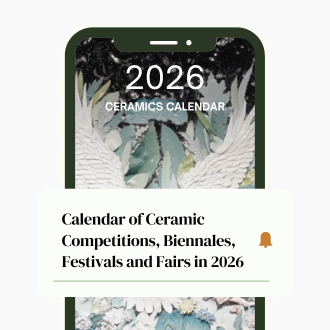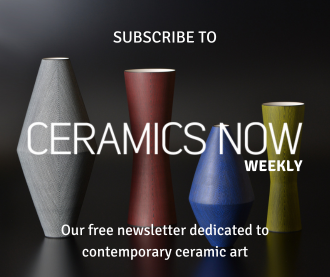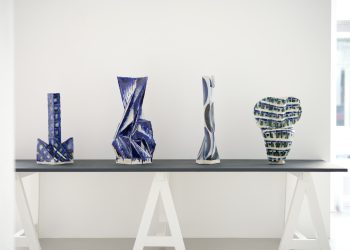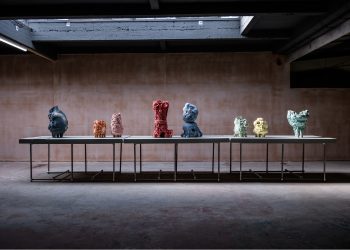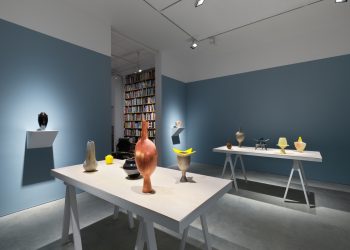Nuala O’Donovan is an Irish artist who makes drawings, paintings and sculptural pieces based on patterns and geometry found in nature. She completed a BA(Hons) Degree, 3D Design through Materials in metal and Glass at Middlesex University in the U.K. Degree (HONS) in Three Dimensional Design and an MFA, (Research – Patterns in Nature), from the Crawford College of Art and Design, MTU, Ireland in 2008. Since then, her work has been exhibited and published internationally and she has been an invited speaker at many educational institutions, galleries, museums, and international arts events. She has been a recipient of a number of major awards and residencies including the Golden Fleece Award, the Centre Culturel Irlandais Residency in Paris, France and the Dean Residency Award in Dublin, Ireland.
O’Donovan’s work has been acquired for the National Art Collection of Ireland, The National Irish Museum Collection, and the National Museum of Northern Ireland, Belfast. She is a professional member of Visual Artists Ireland, an elected member of the Royal Society of Sculptors, U.K., and selected maker for Irish Craft Portfolio Critical Selection. She currently lives and works in Ireland.
Visit Nuala O’Donovan’s website and Instagram page.
Featured work
Teasel Series, 2011-2022
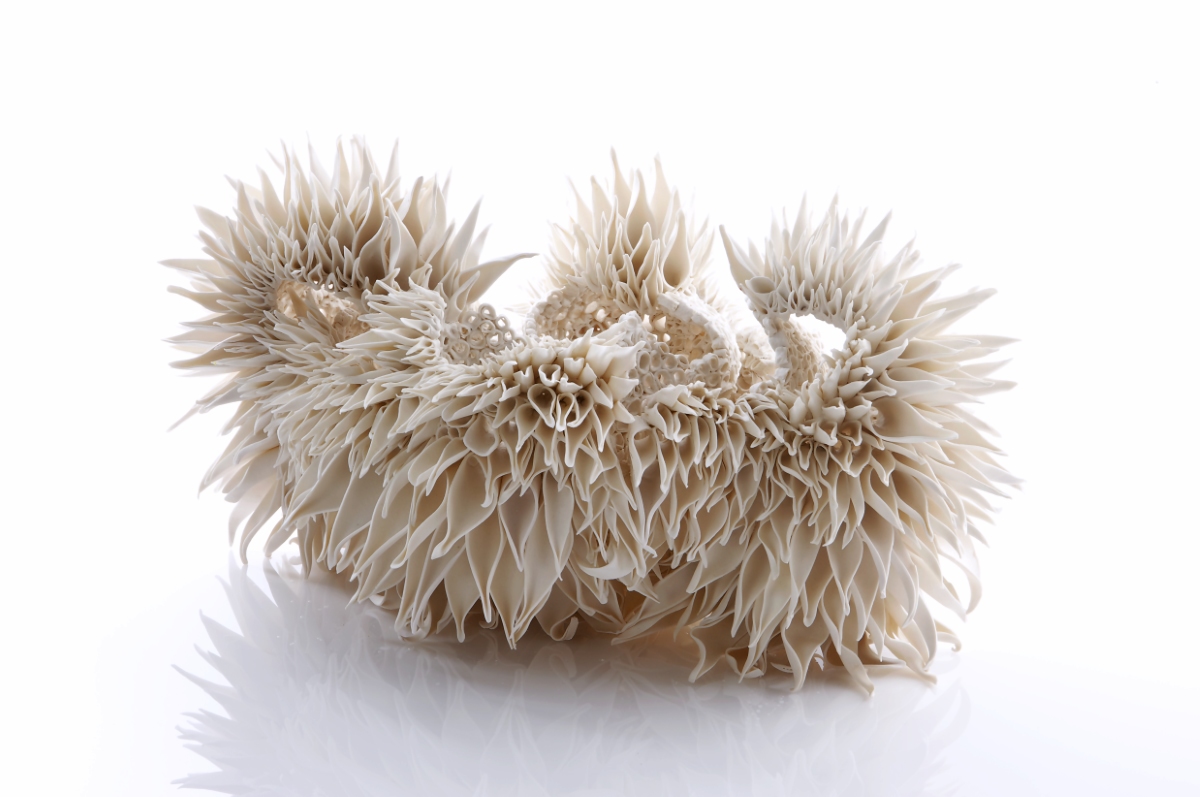
Coral Series, 2015-2022
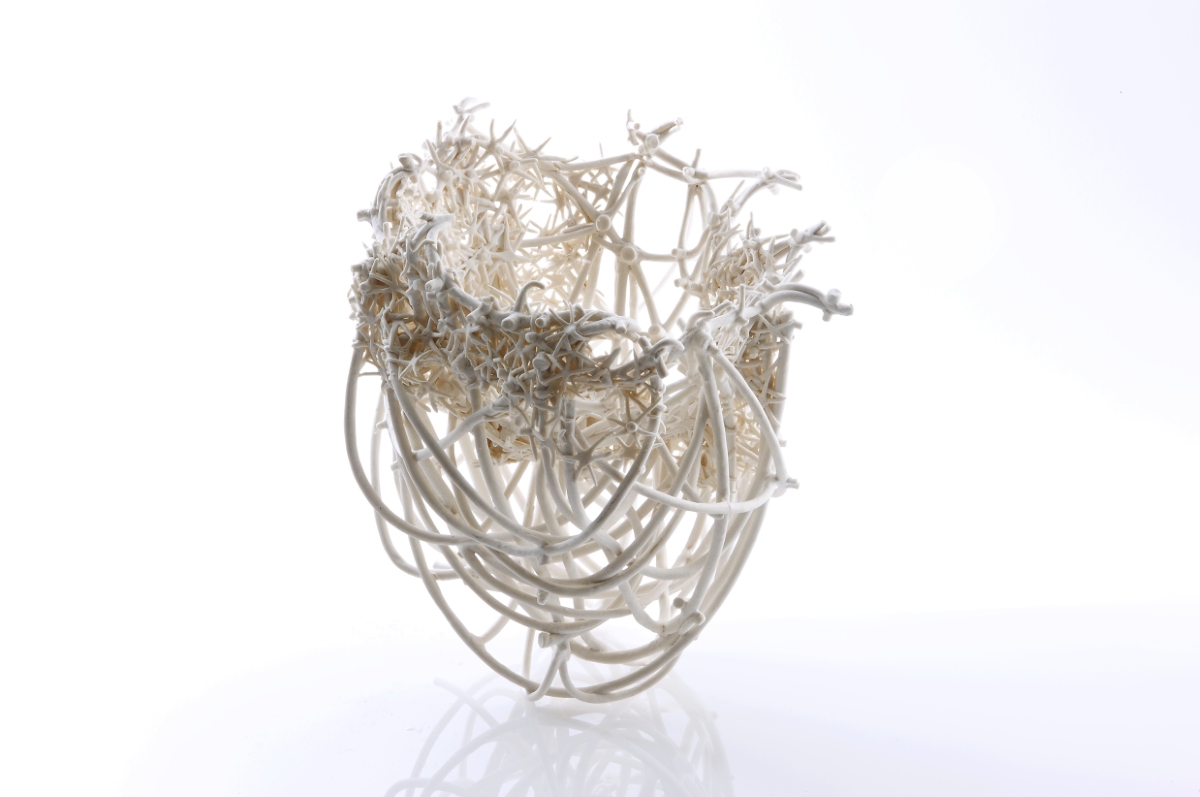
Banksia Series, 2011-2022
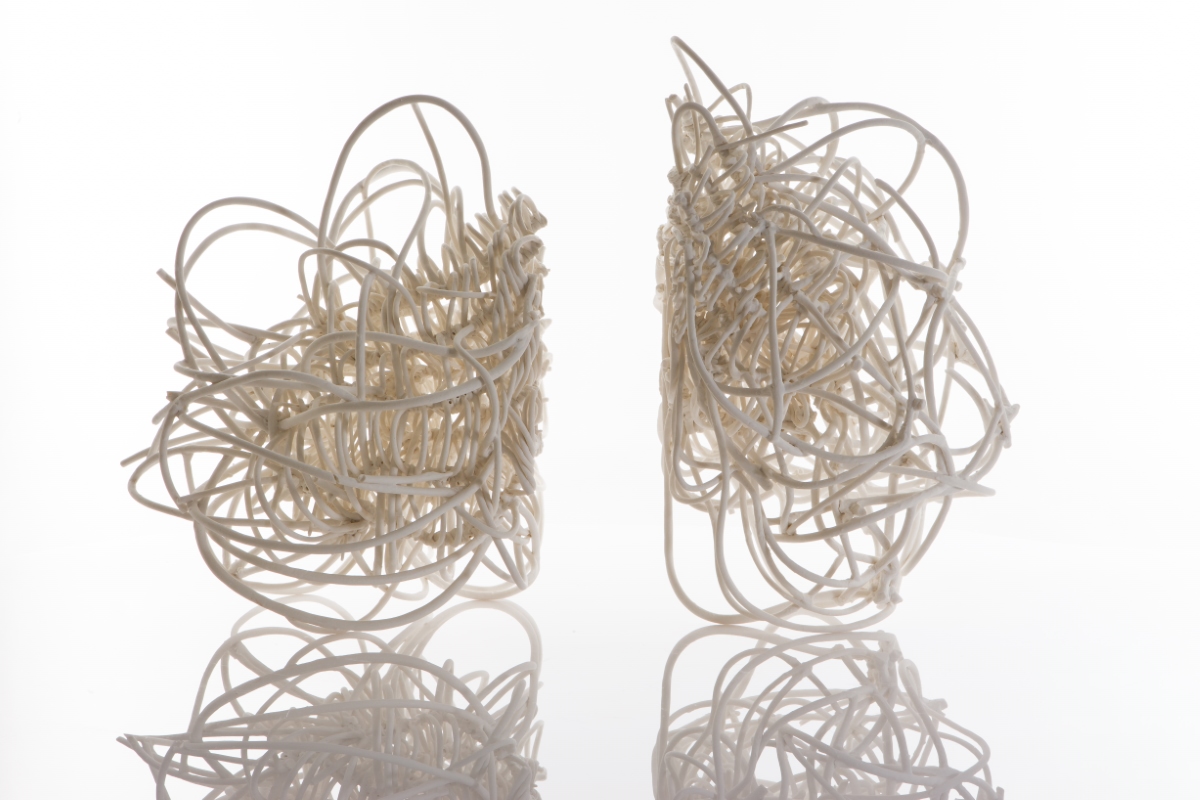
Radiolaria / Grid Series, 2015-2018
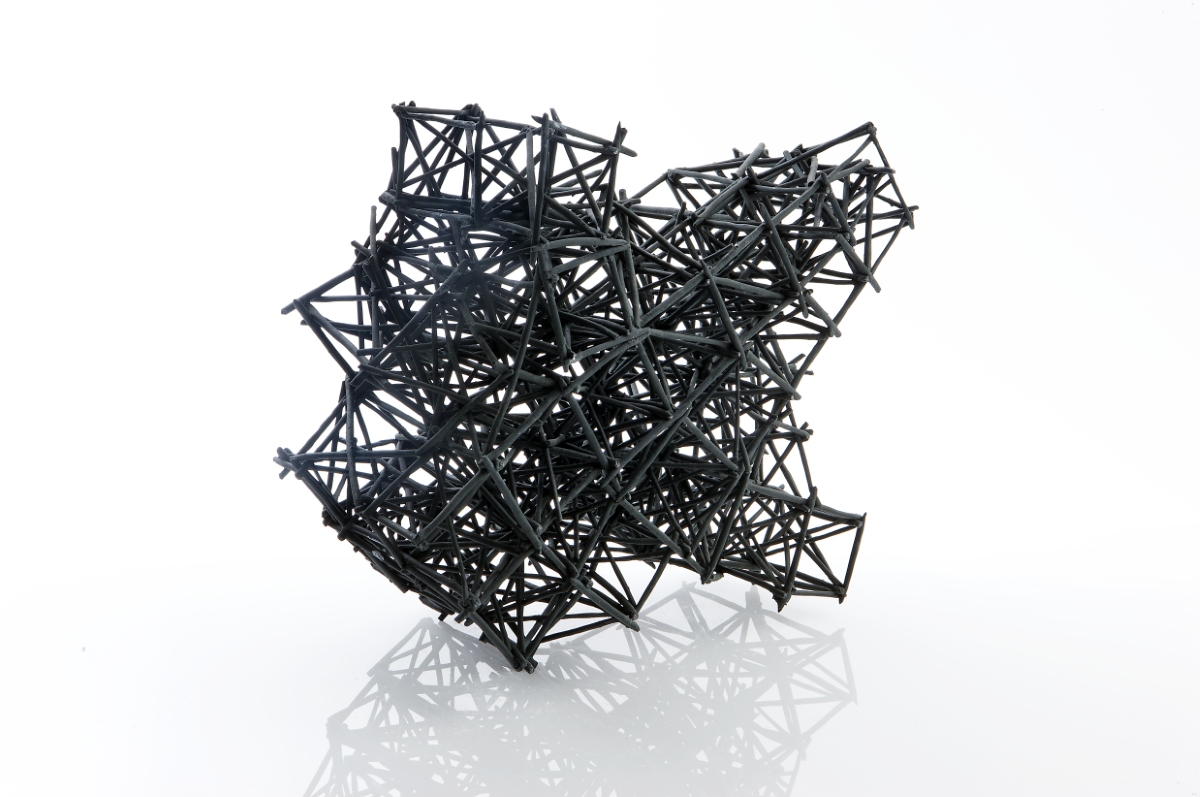
I make sculptural work, mainly in porcelain clay, based on forms in nature. I’m interested in the narrative suggested by irregularities in the patterns of living organisms and the geometry of their forms – fractal and regular – both geometries are important in the history of aesthetic traditions.
It’s important to me that my work refers to, and places itself within, the history of the use of pattern and geometry in art. In many traditions pattern had a function as a narrative device for a society which was literate in its language of symbolism, pattern, and geometry. In my own culture, the understanding of this language is now rare, often limited to interpretation by academics. Sadly, as with many other societies, it has lost its function as a method of universal communication.
I begin my sculptural pieces by looking at structural patterns found in nature. The work begins with photographs and drawings of natural forms. Drawing requires close observation, and I am always intrigued by the details, especially the irregularities in the patterns. They suggest a story, an event in the life of the organism. I’m also interested in structures, by isolating a single element of the three-dimensional pattern, I can investigate the way that the structure of the plant is created and use this information to begin building a new form. The plants that I study are often examples of regular geometry, the principles of which formed the basis of Classical Art, which aspired to portray beauty through harmonious form based on symmetry and proportion. I combine both geometries in my pieces – the Classical/regular in the decisions about the proportions of the work and the fractal/irregular in the building of the piece. Fractal geometry allows me to follow the imperfections in the handmade elements of the pattern, therefore a creating a type of narrative and unique outcome of each form.
Benoit Mandelbrot, the mathematician credited with defining fractal geometry, described it simply as: “A fractal is a rough or fragmented geometric shape that can be split into parts, each of which is (at least approximately) a reduced-size copy of the whole.”



